
Thanks to everyone who has created an account on the systemic backend, downloaded the console, and submitted fits to the HD 69830 data sets. It’s gratifying to see the collaborative effort coming together. We’re starting to get a better understanding of which aspects of the HD 69830 data set seem secure, and which aspects are uncertain.
That outer planet seems to me to be leaning toward the latter category.
For example, I just had a look at data set #17 for HD 69830. Guided first by the console’s periodogram and then by the console’s residuals periodogram, I worked up a two planet fit to the data. I kept the orbits of the resulting 8.66 and 31.7 day planets circular. In the absence of strong planet-planet gravitational interactions or resonant disk migration, I don’t see a clear rationale for assigning non-circular orbits unless the data really demands it.
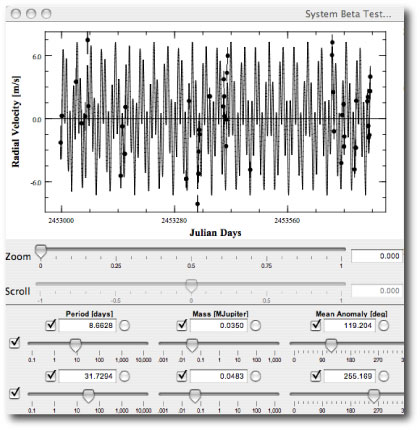
The residuals periodogram of the 2-planet fit above has peaks near 200 and 400 days. The 200 day peak is a little higher, and indeed, corresponds to the outermost planet announced in the Nature paper published last week.
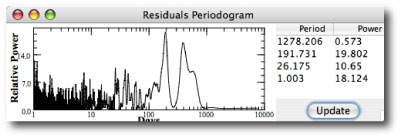
Use the folding window to look at the case for the 200 day planet. Try updating the period in tiny increments, and watch the data congeal into a relatively sinusoidal pattern. The third planet in the published fit is based on this configuration:
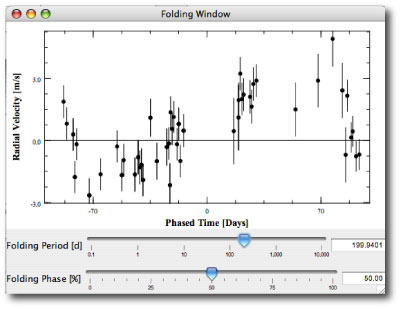
The 400 day data also looks good (although the power is not quite as high). Notice, too, that the phase coverage near 400 days is not as good. This is due both to the limited time baseline of the whole data set, as well as to the fact that the star can be observed only when it is not too near the Sun in the sky.
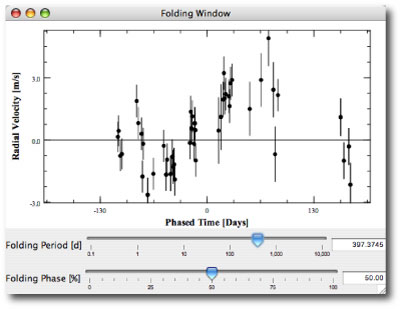
Apparently, the Las Vegas bookies are giving 3:1 odds in favor of the 200 day planet being correct. That said, however, the 400 day planet rounds out a very nice all-circular fit to the data.
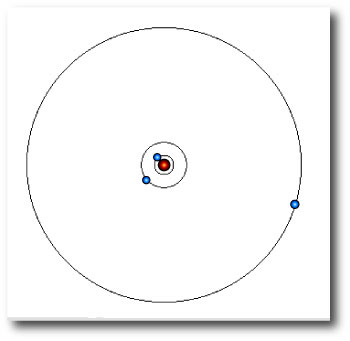

Pingback: systemic - 208 nights, please